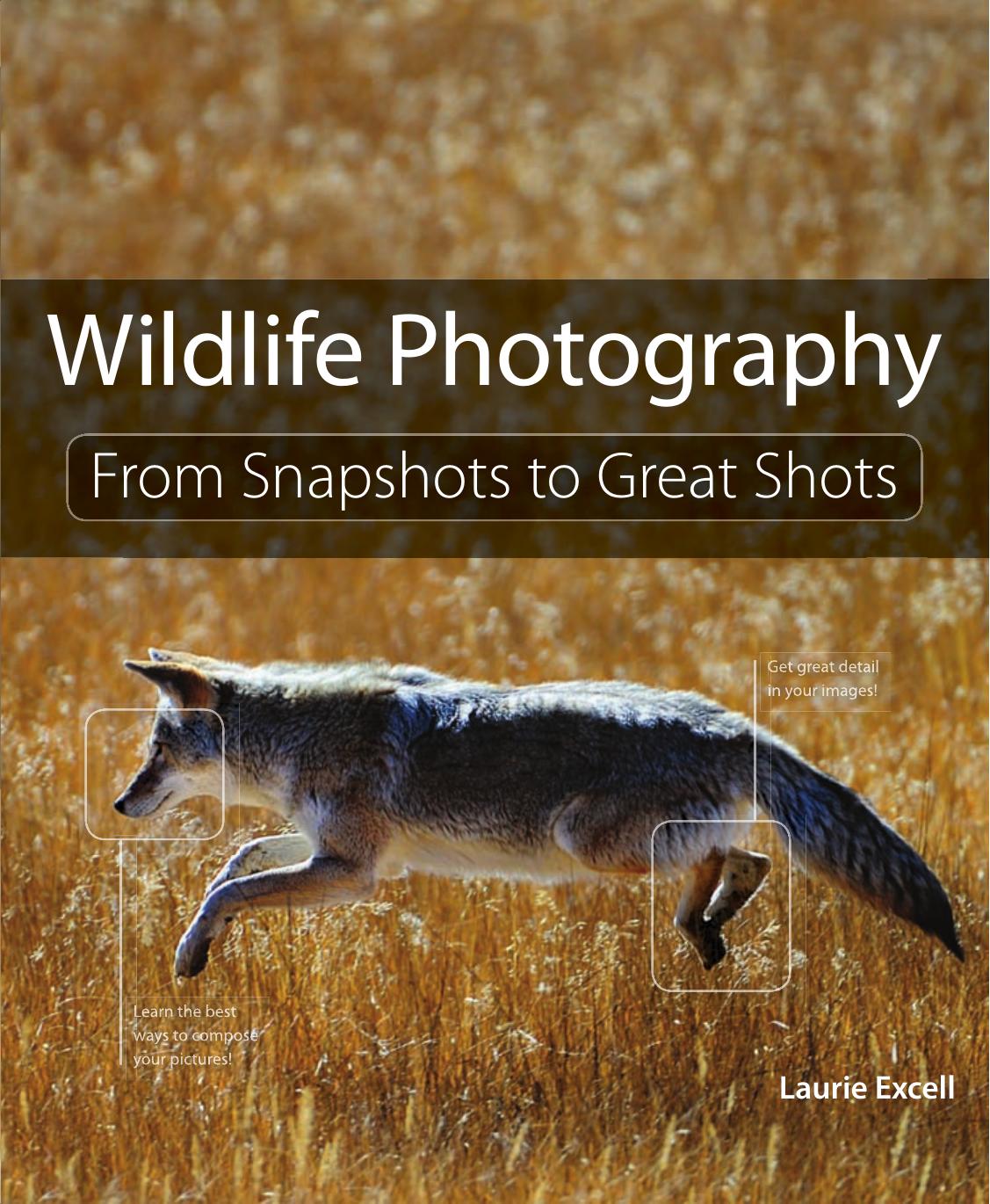Wildlife Photography: From Snapshots to Great Shots by Laurie Excell

Author:Laurie Excell
Language: eng
Format: mobi, pdf
ISBN: 9780321794505
Publisher: Peachpit Press
Published: 2011-11-01T04:27:54+00:00
Figure 5.3 An American Wigeon flaps its wings to remove excess water after a bath.
Zoos and Game Parks
Once you have the hang of working with smaller wildlife subjects and are ready to move on to big game, head to your local zoo or game park to continue your wildlife photography education. One of the first facts you’ll learn is that most wildlife is active early in the day and then again towards evening. Most animals like to rest in the midday heat (there are definitely exceptions to this observation, but it’s a good barometer to start with). Because the light is usually best at those times of day too, that’s definitely a plus for most wildlife photography. While you are practicing your wildlife photography skills at your local zoo, try different focal lengths to see just how wide you need to be to get a full-frame body shot (Figure 5.4). Then practice how close you need to be to get a frame-filling portrait at your longest focal length (Figure 5.5). A trip to the local zoo with a Nikon D300s and a 28–300mm VR lens enabled me to compare focal lengths at a given distance to my subject and to practice handholding at slow shutter speeds.
Figure 5.4 A zoom lens enabled me to back off and get a full-body shot of an Amur Leopard at the Hogle Zoo in Salt Lake City.
Download
Wildlife Photography: From Snapshots to Great Shots by Laurie Excell.pdf
This site does not store any files on its server. We only index and link to content provided by other sites. Please contact the content providers to delete copyright contents if any and email us, we'll remove relevant links or contents immediately.
| Gardens | Landscapes |
| Plants & Animals | Underwater |
Shoot Sexy by Ryan Armbrust(17617)
Portrait Mastery in Black & White: Learn the Signature Style of a Legendary Photographer by Tim Kelly(16919)
Adobe Camera Raw For Digital Photographers Only by Rob Sheppard(16867)
Photographically Speaking: A Deeper Look at Creating Stronger Images (Eva Spring's Library) by David duChemin(16559)
Bombshells: Glamour Girls of a Lifetime by Sullivan Steve(13933)
Art Nude Photography Explained: How to Photograph and Understand Great Art Nude Images by Simon Walden(12910)
Perfect Rhythm by Jae(5283)
Pillow Thoughts by Courtney Peppernell(4180)
The Book of Joy by Dalai Lama(3863)
Good by S. Walden(3457)
The Pixar Touch by David A. Price(3336)
A Dictionary of Sociology by Unknown(2934)
Fantastic Beasts: The Crimes of Grindelwald by J. K. Rowling(2915)
Stacked Decks by The Rotenberg Collection(2781)
Humans of New York by Brandon Stanton(2753)
Read This If You Want to Take Great Photographs by Carroll Henry(2643)
On Photography by Susan Sontag(2548)
Photographic Guide to the Birds of Indonesia by Strange Morten;(2469)
Insomniac City by Bill Hayes(2465)
